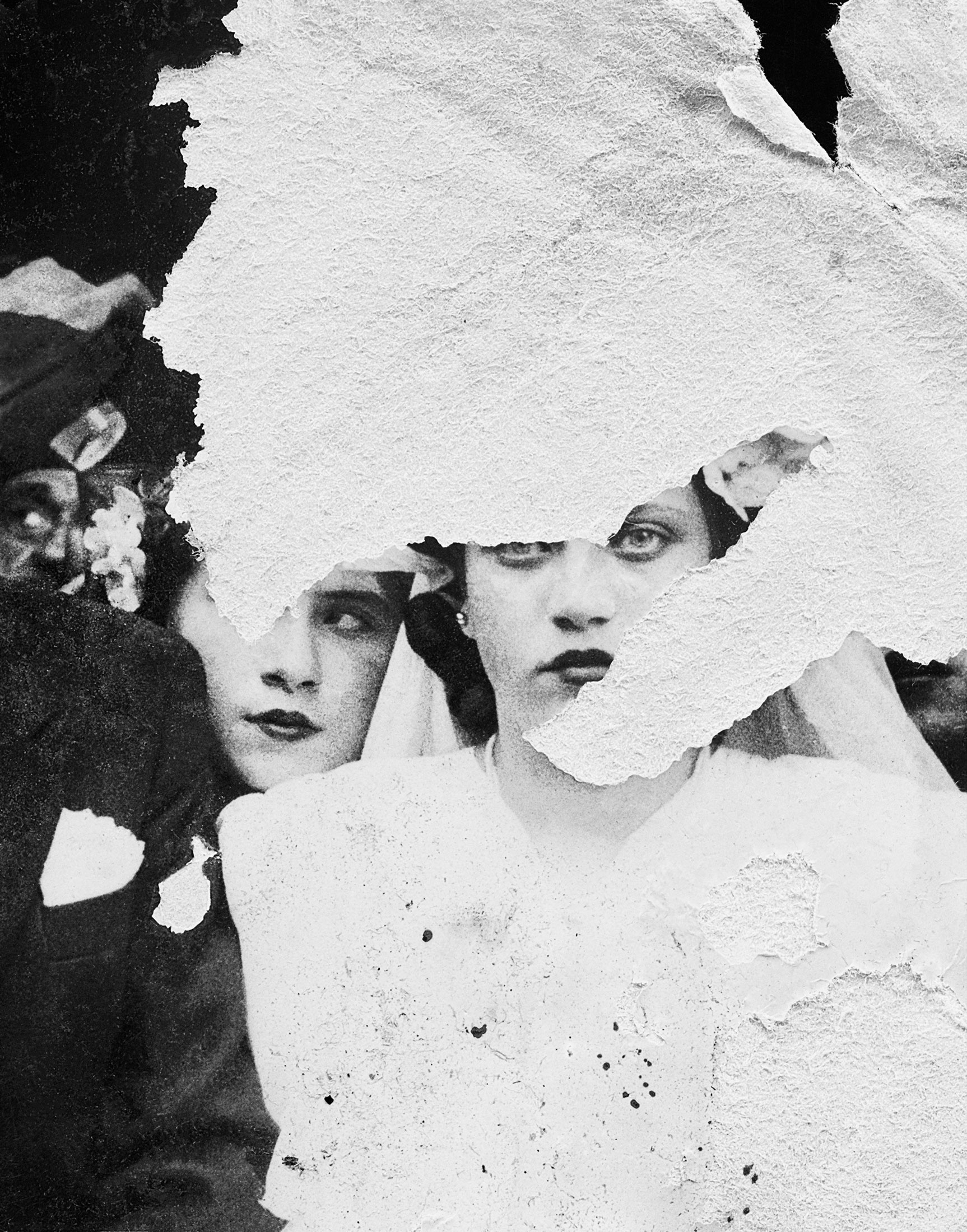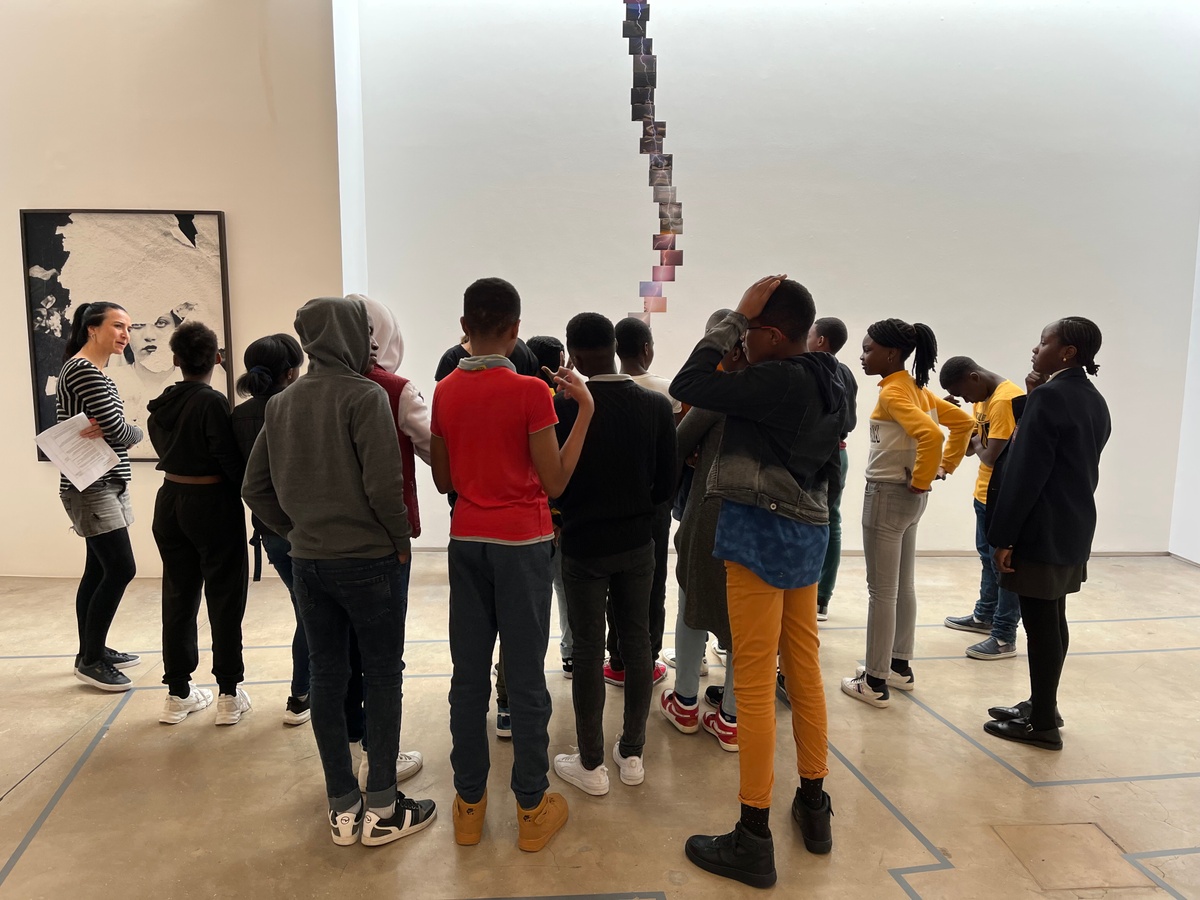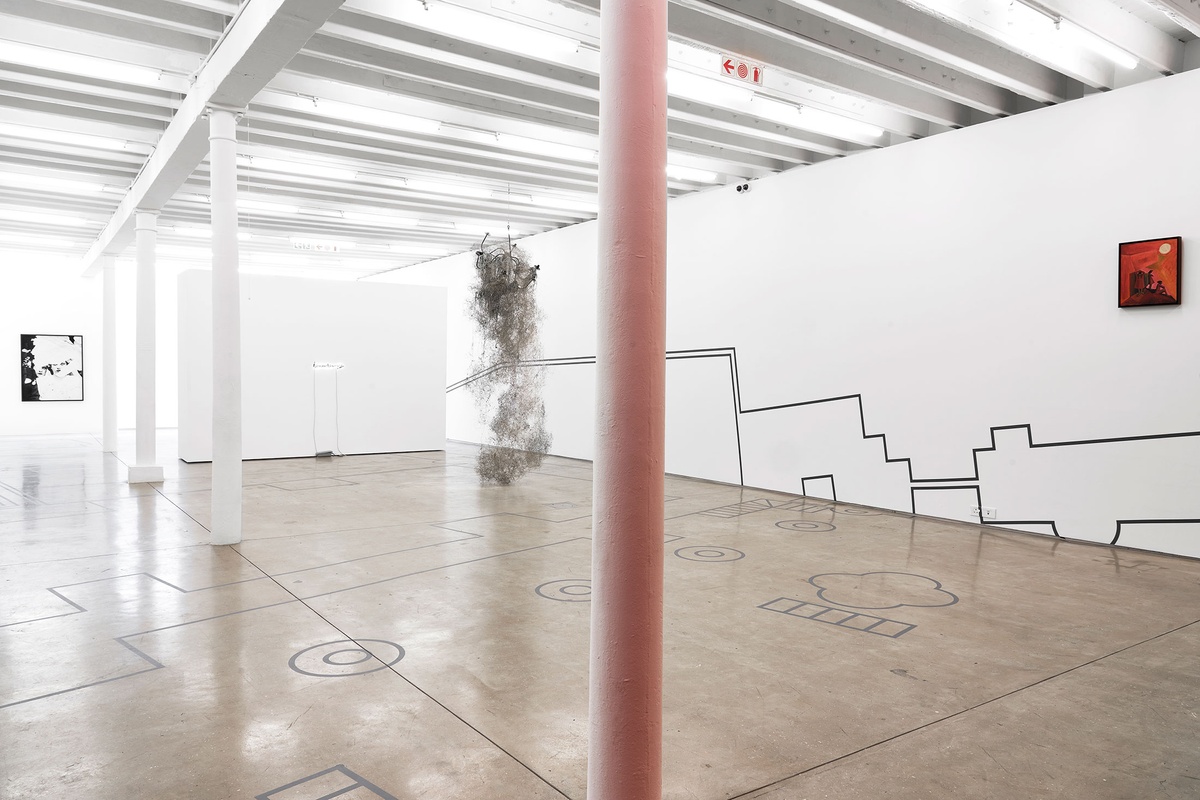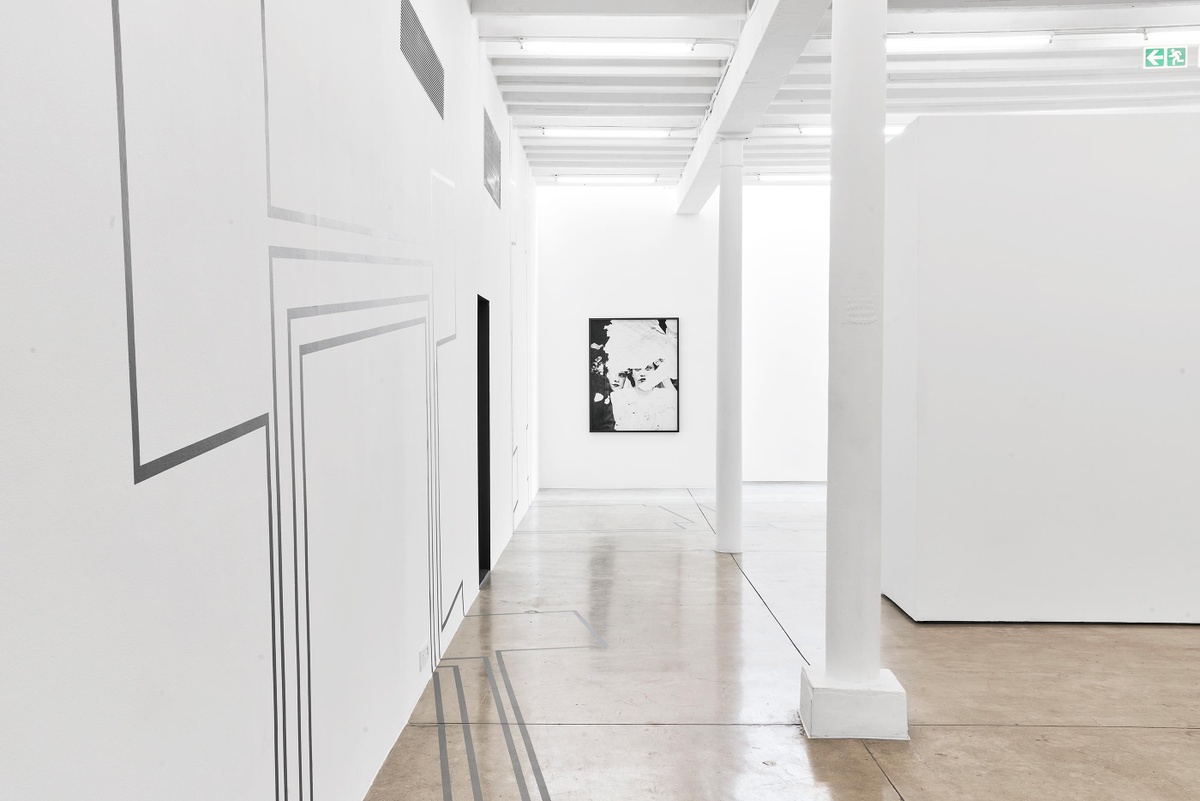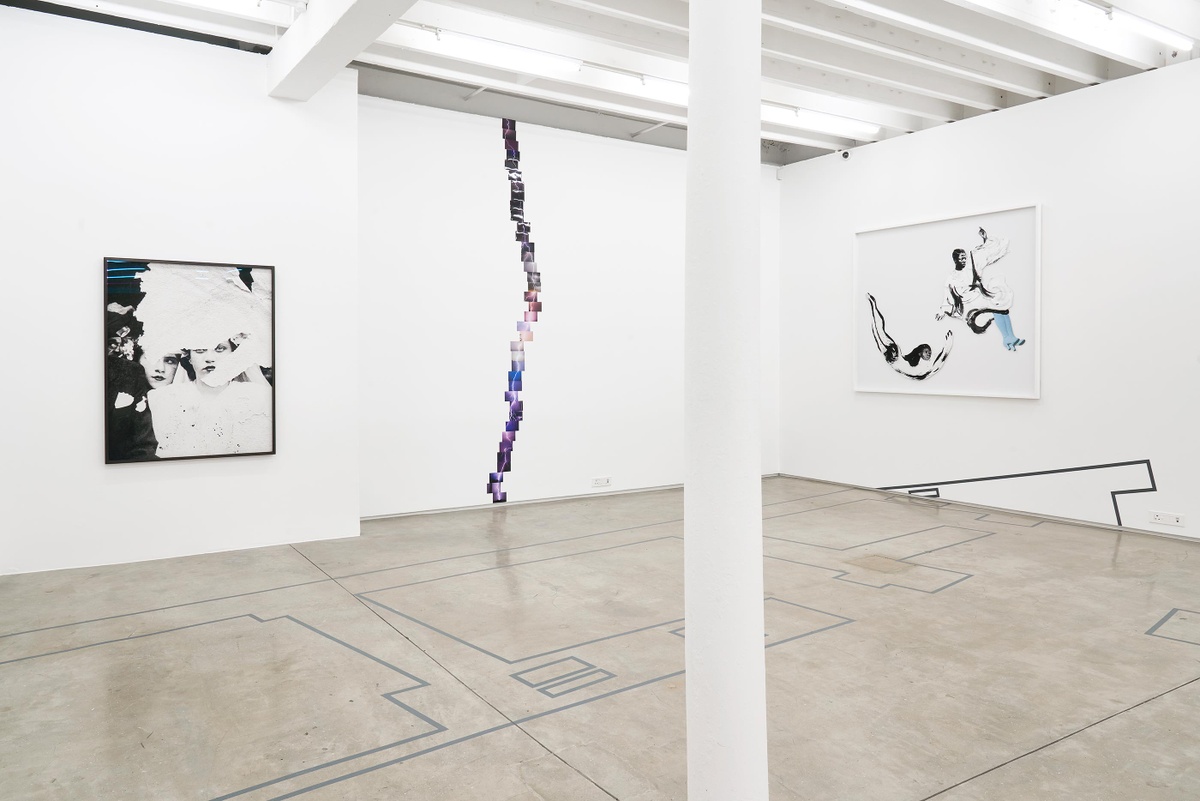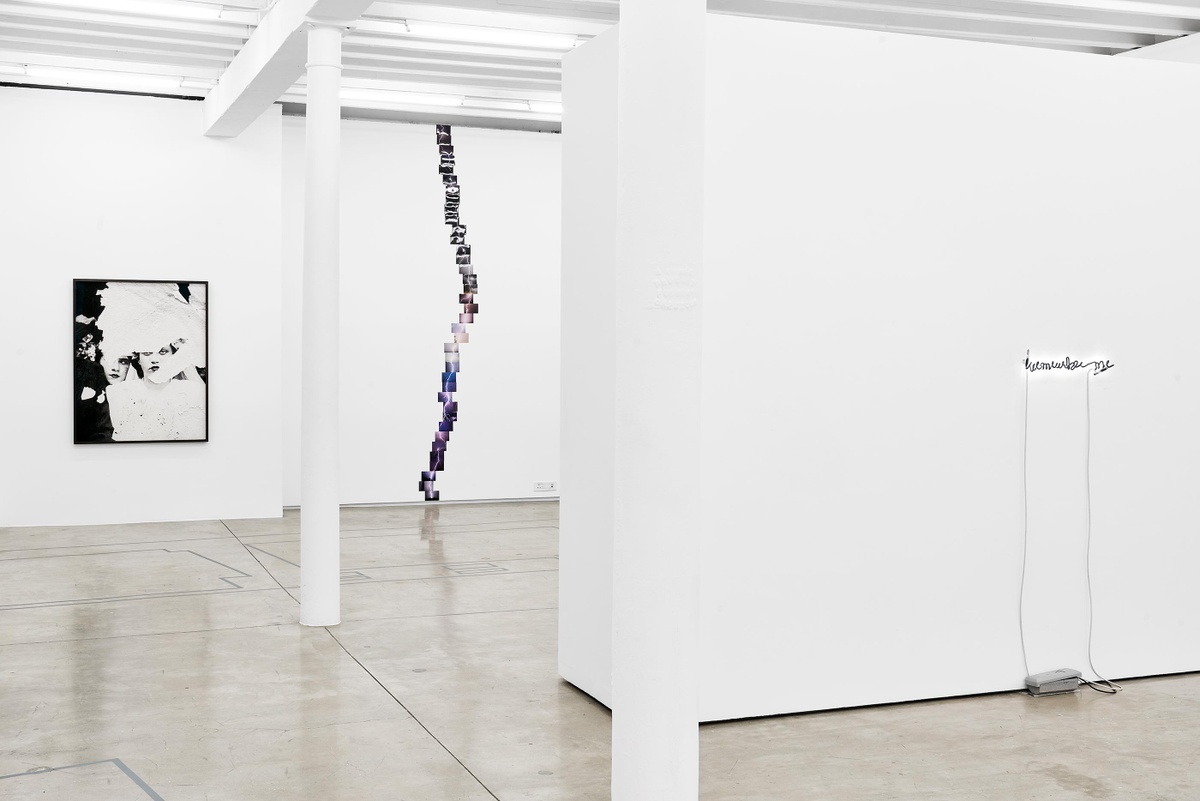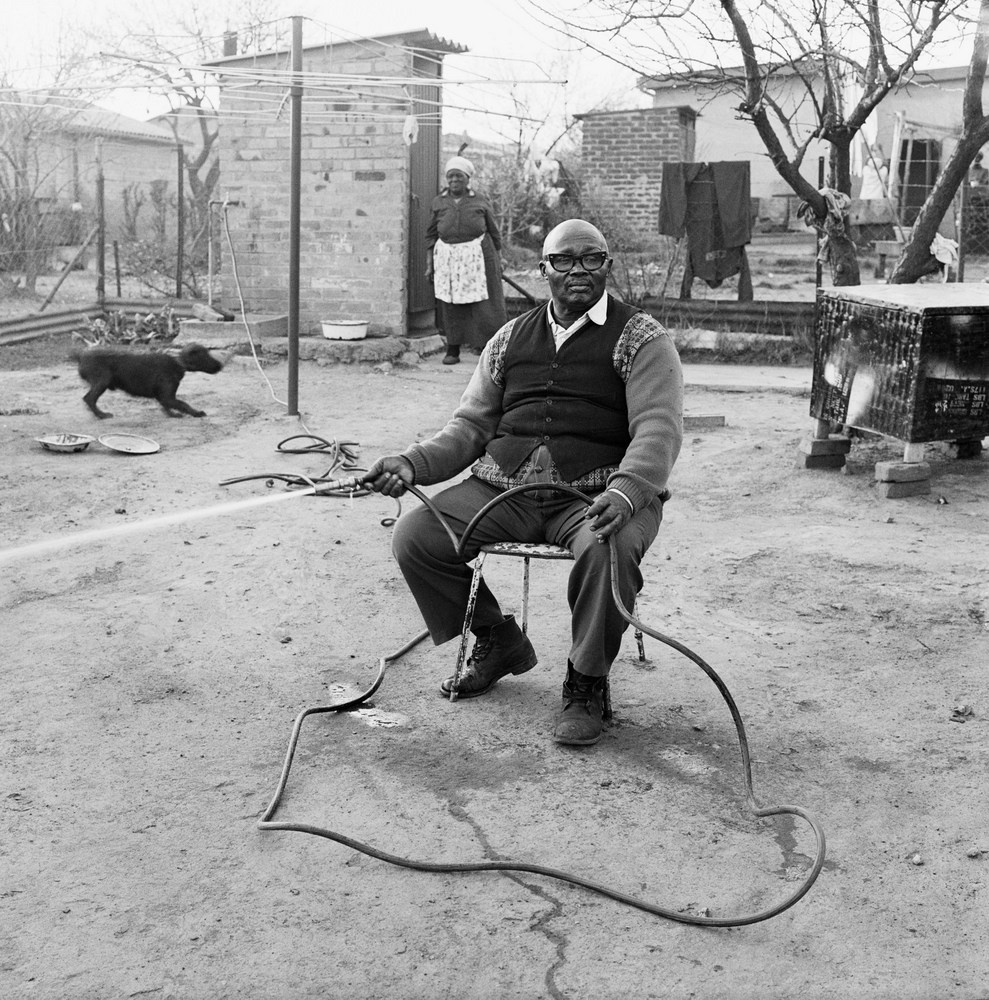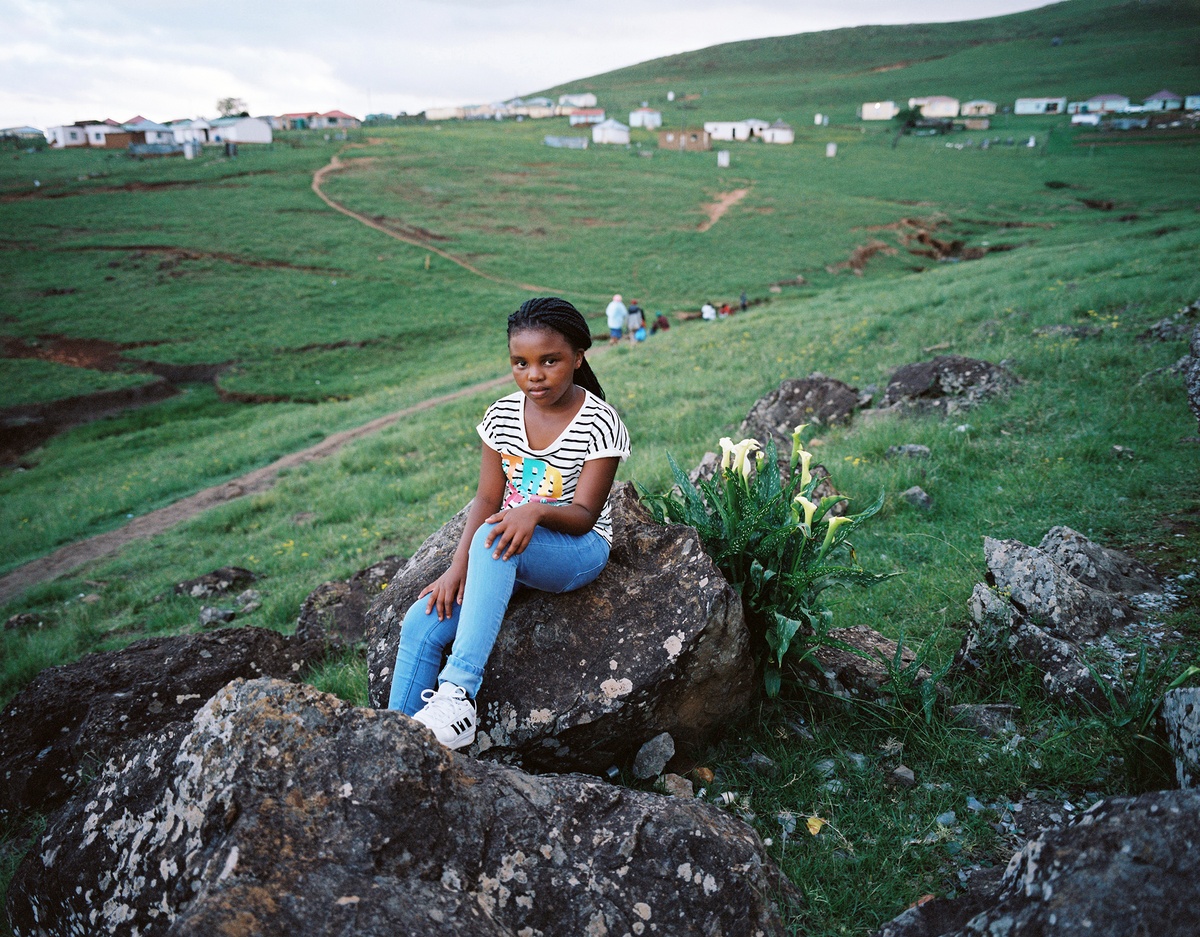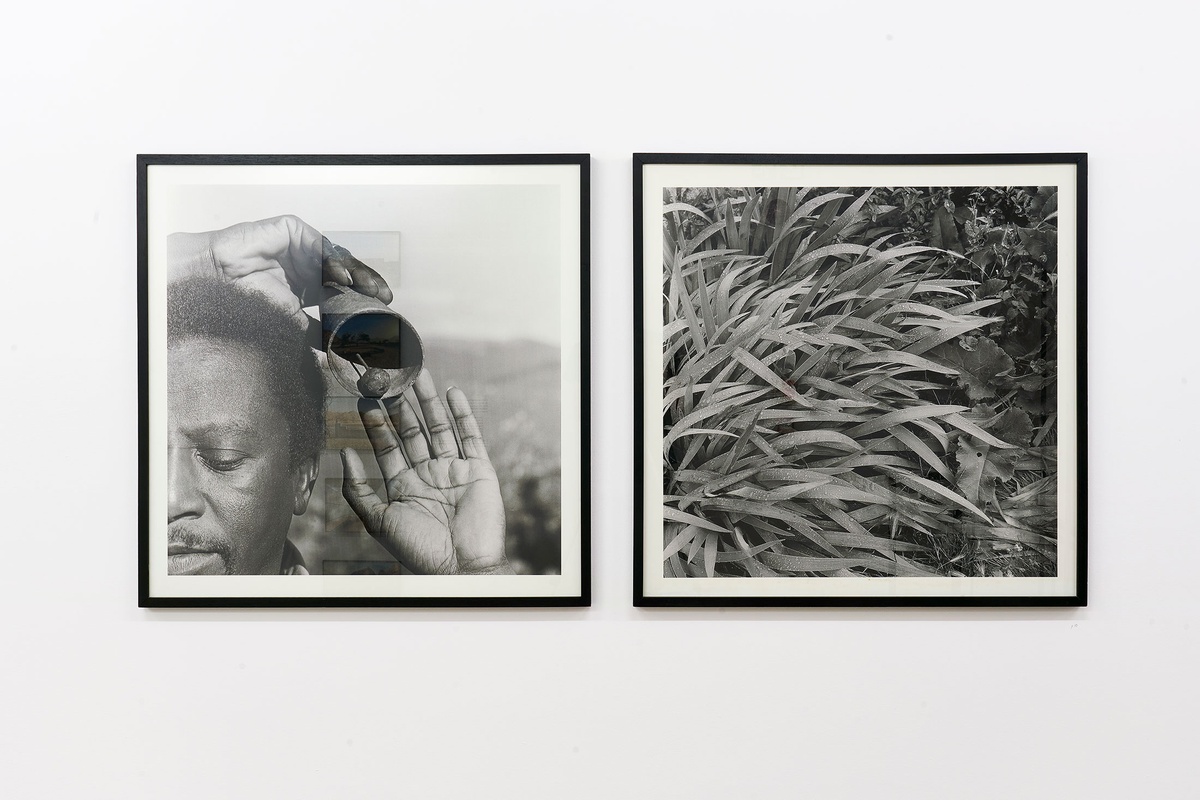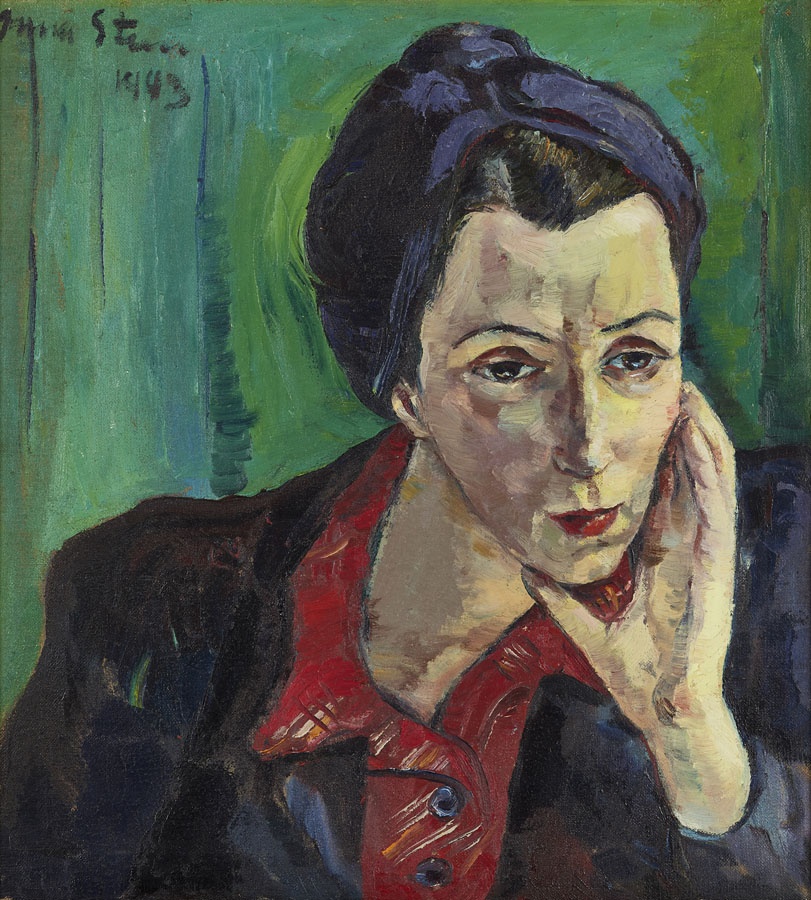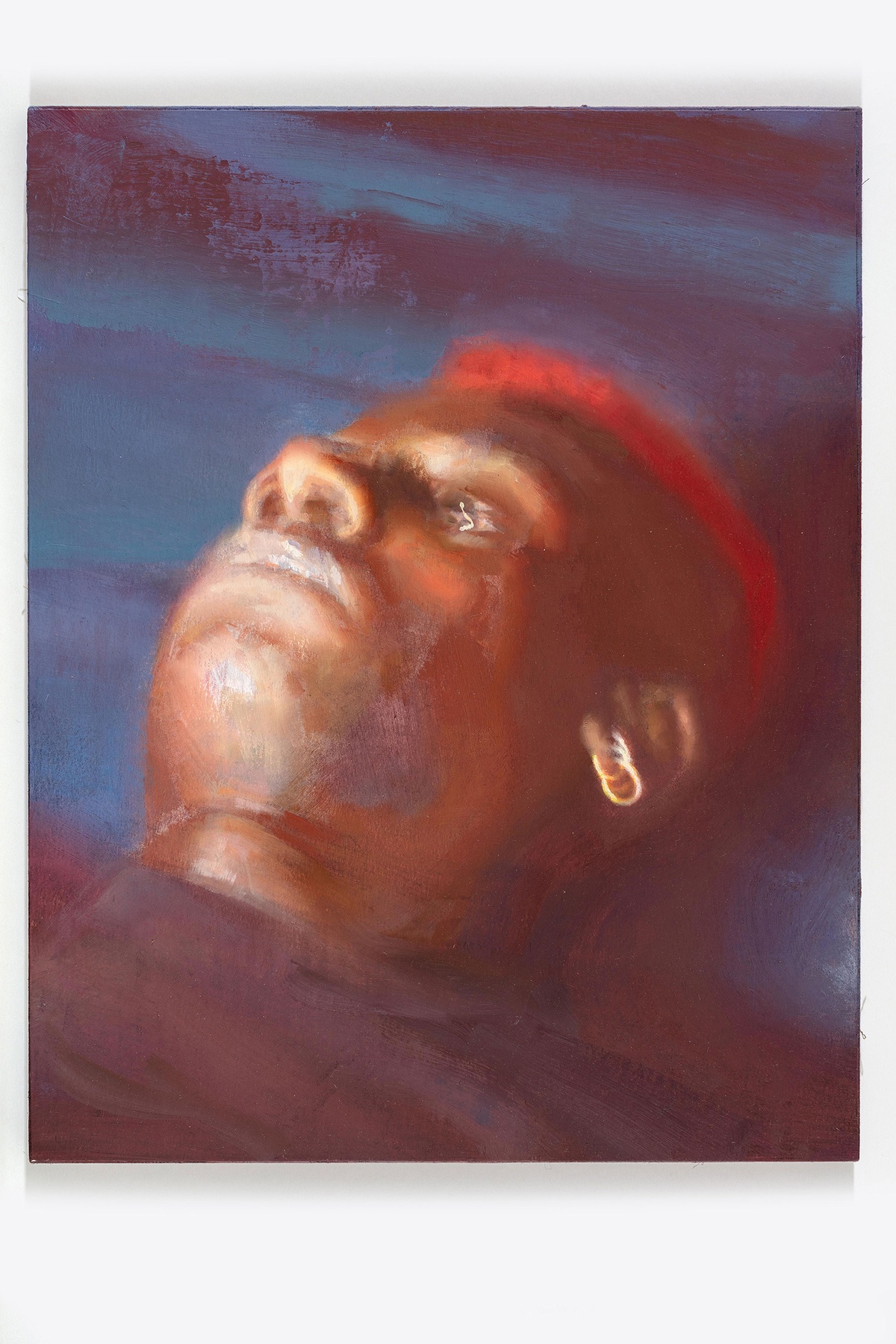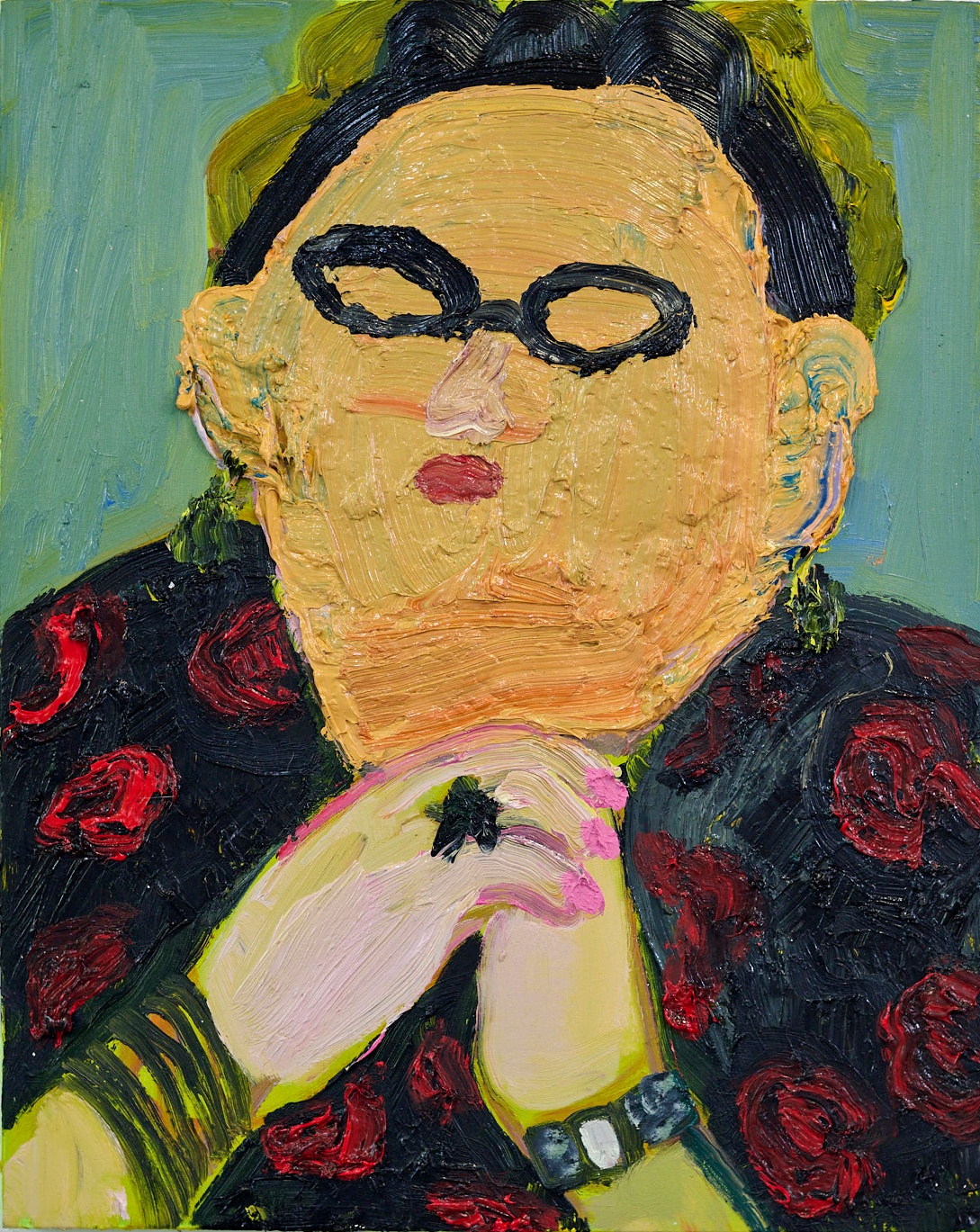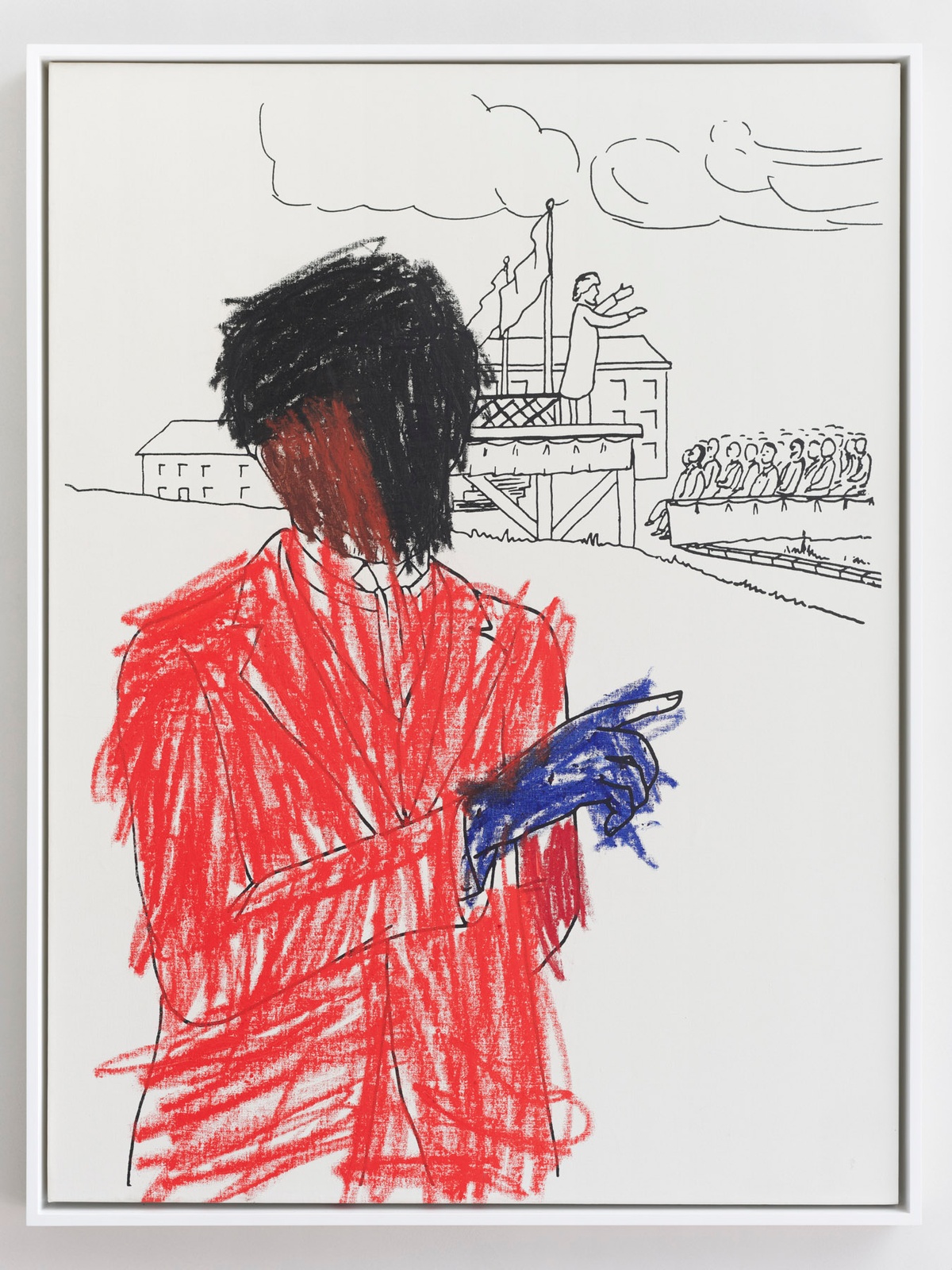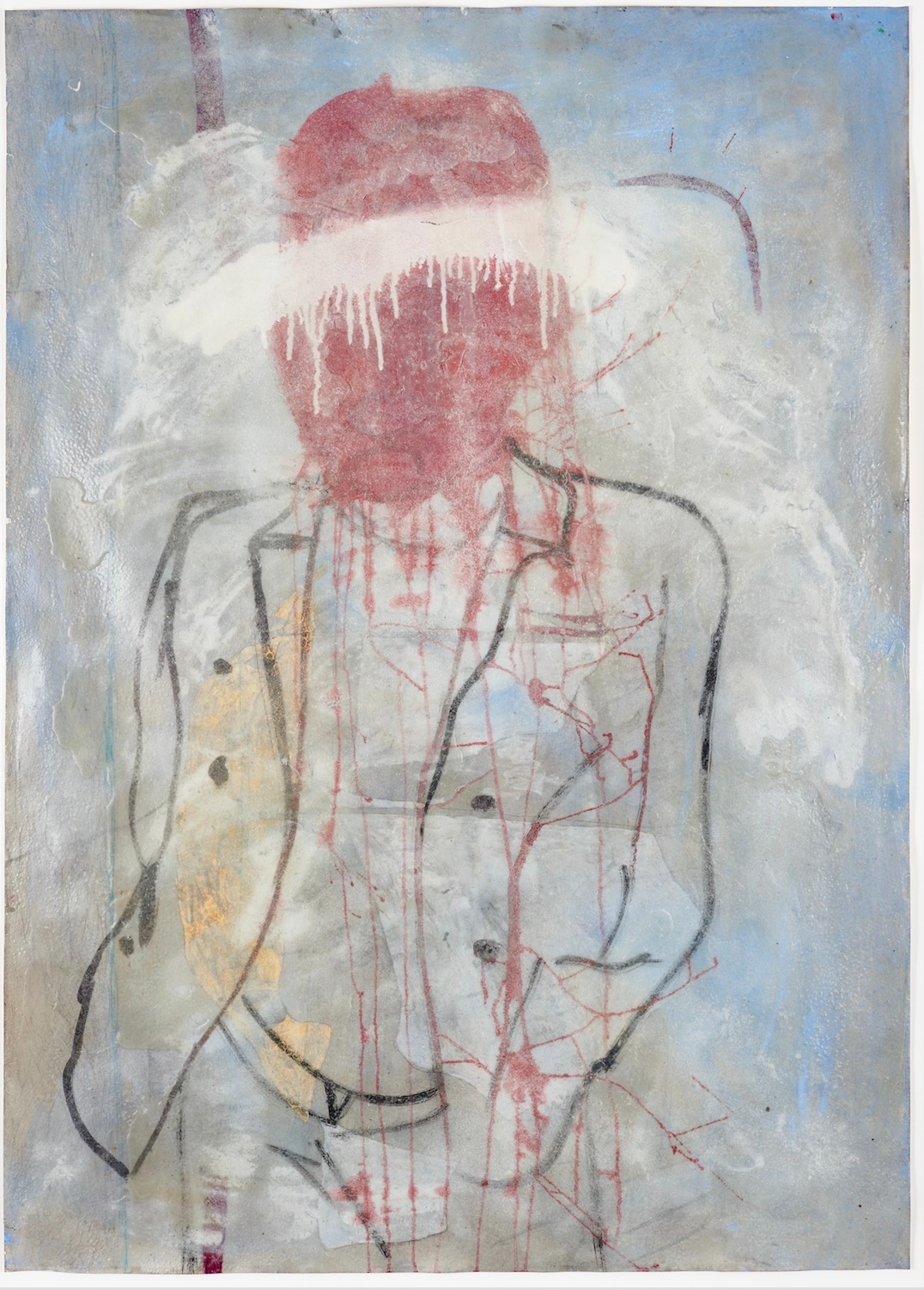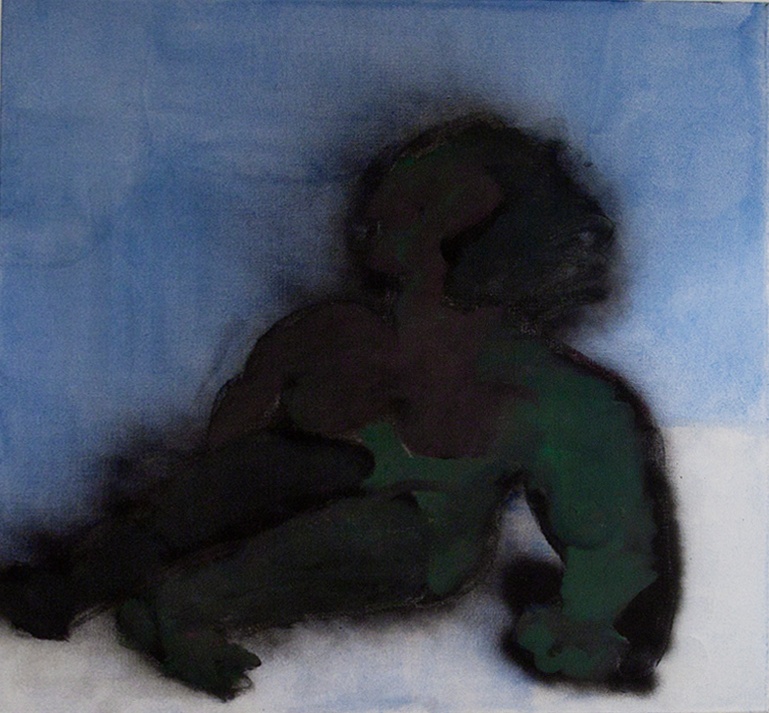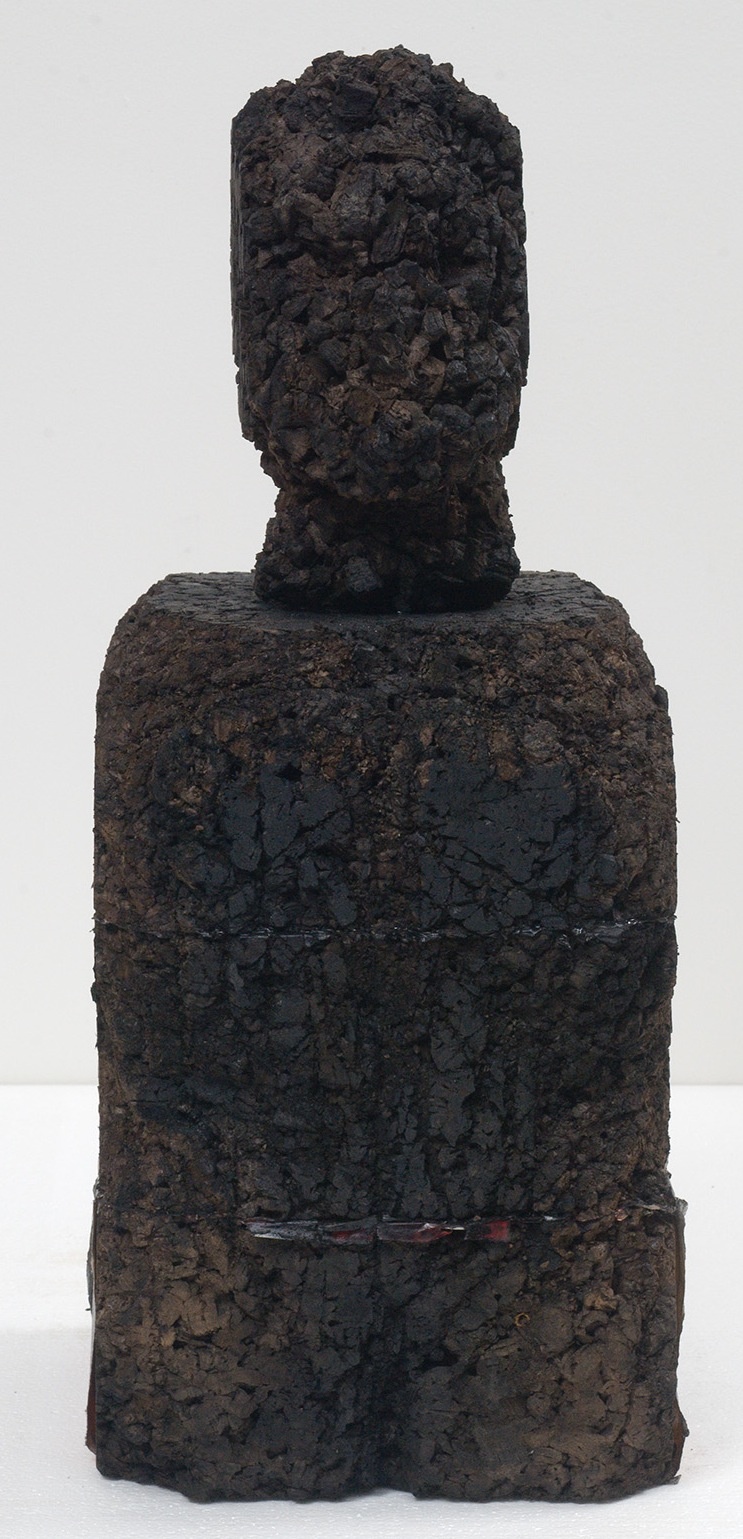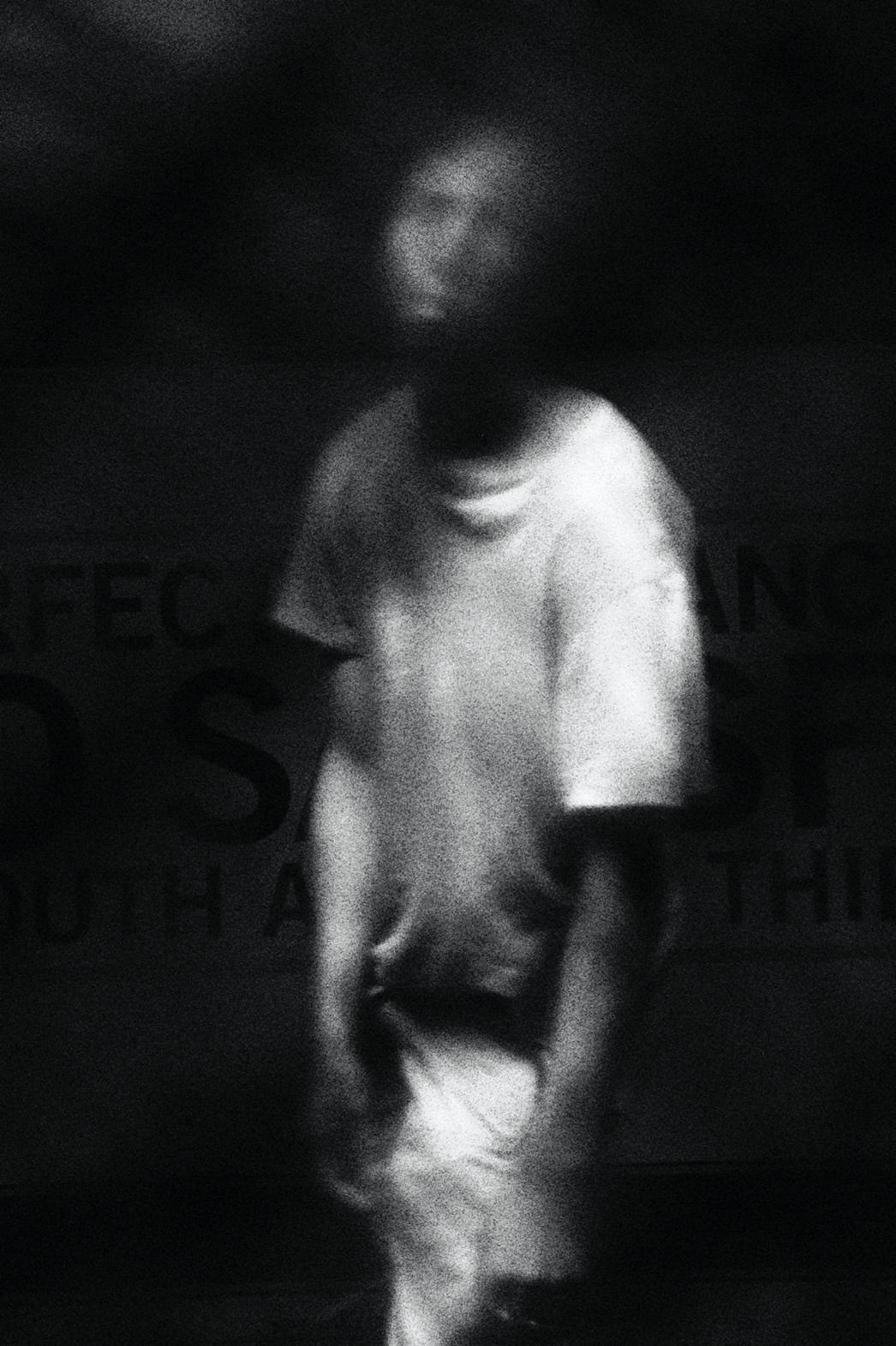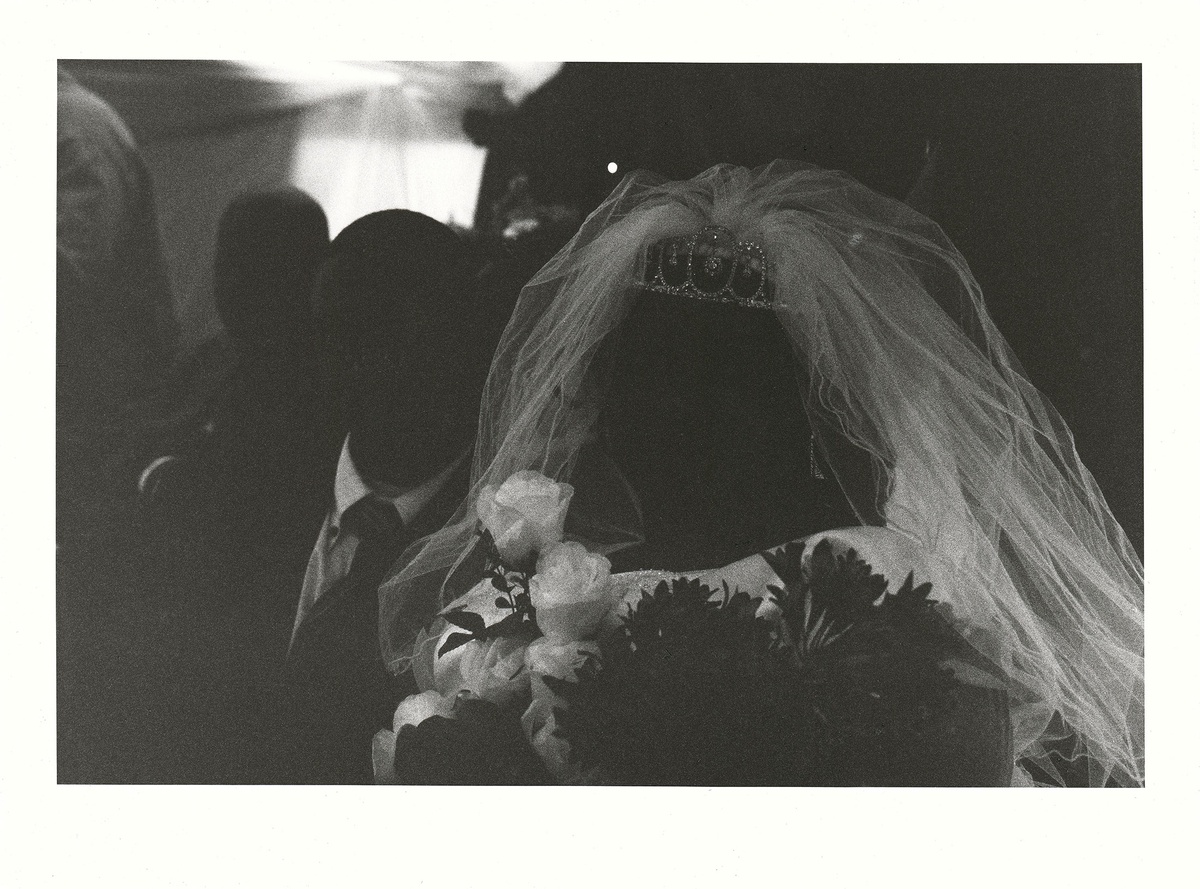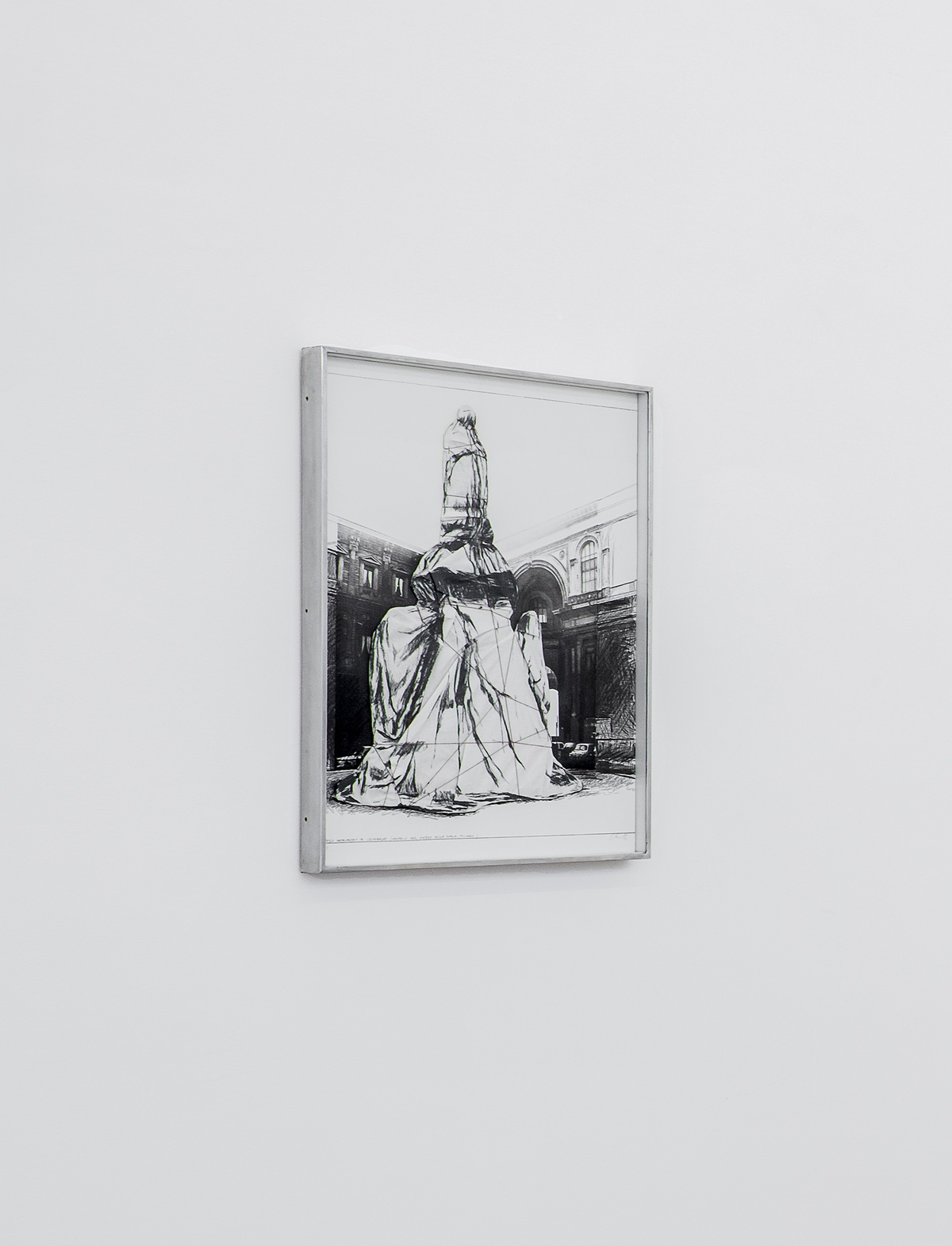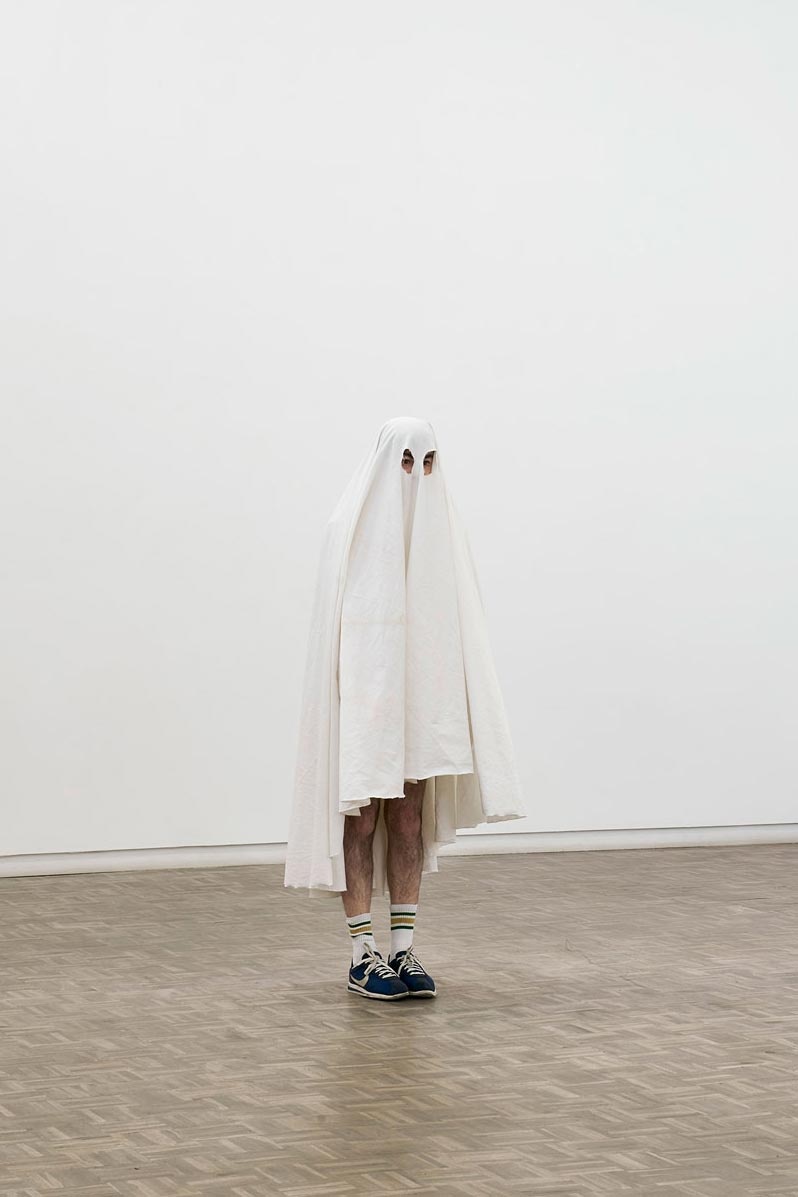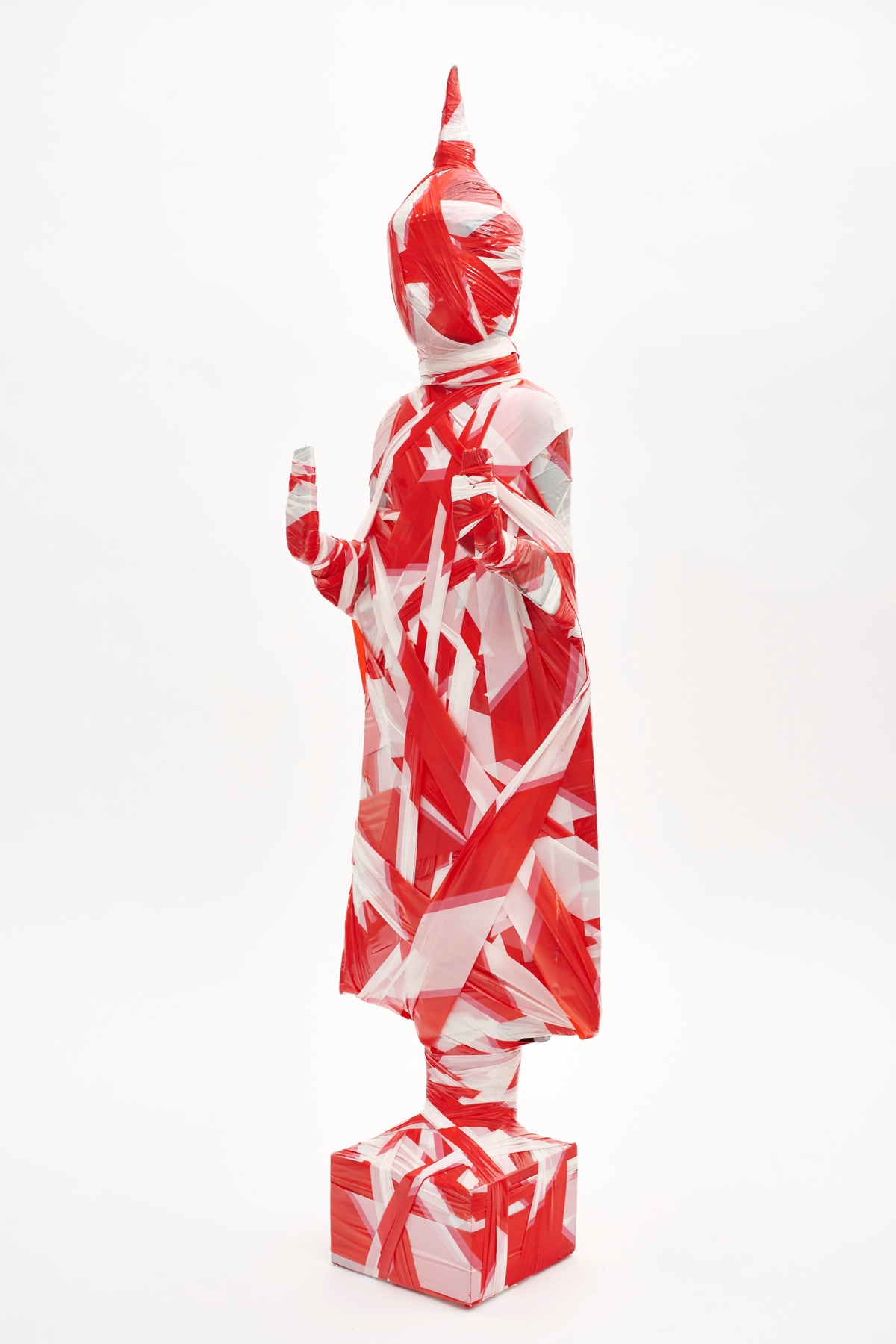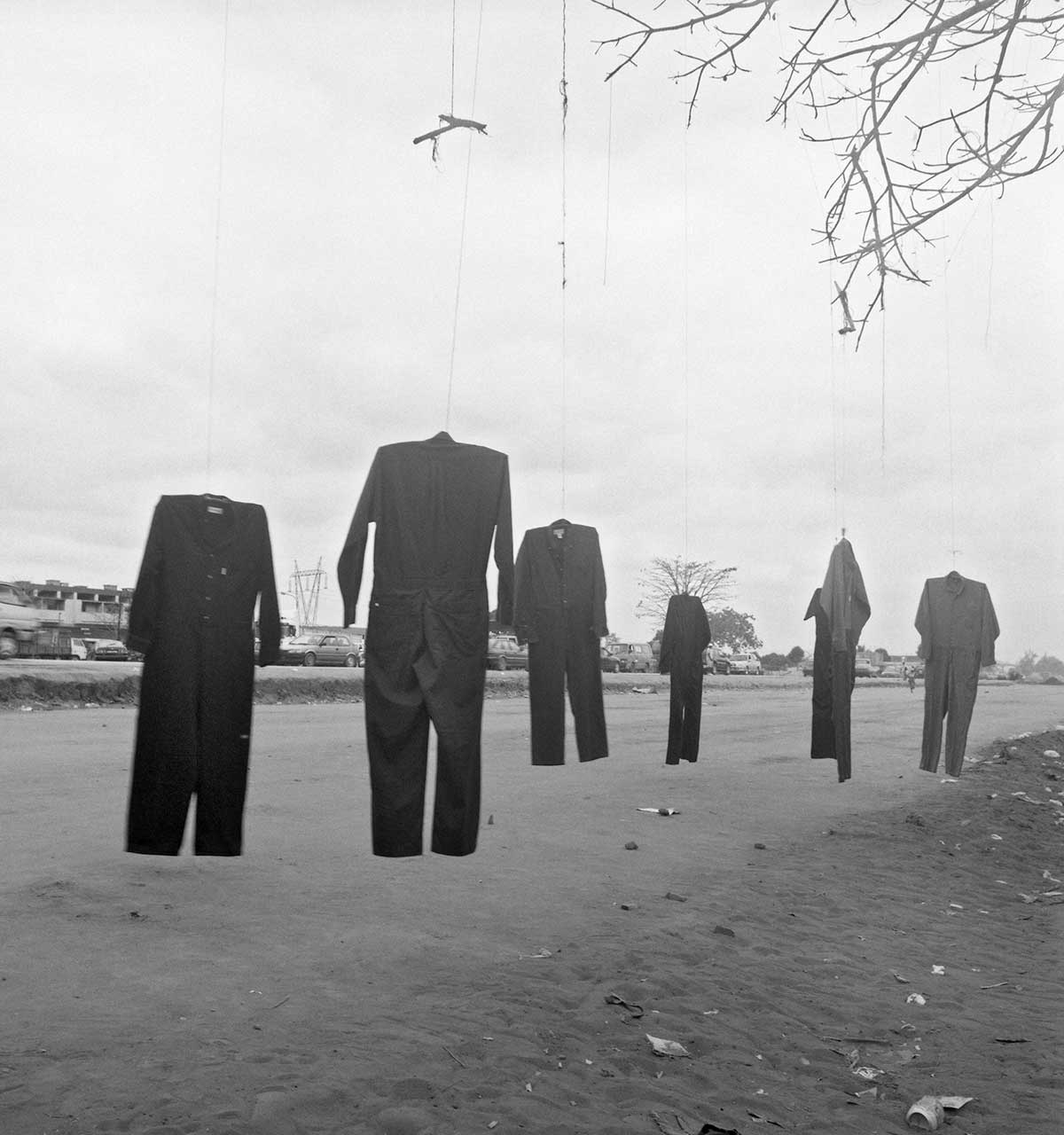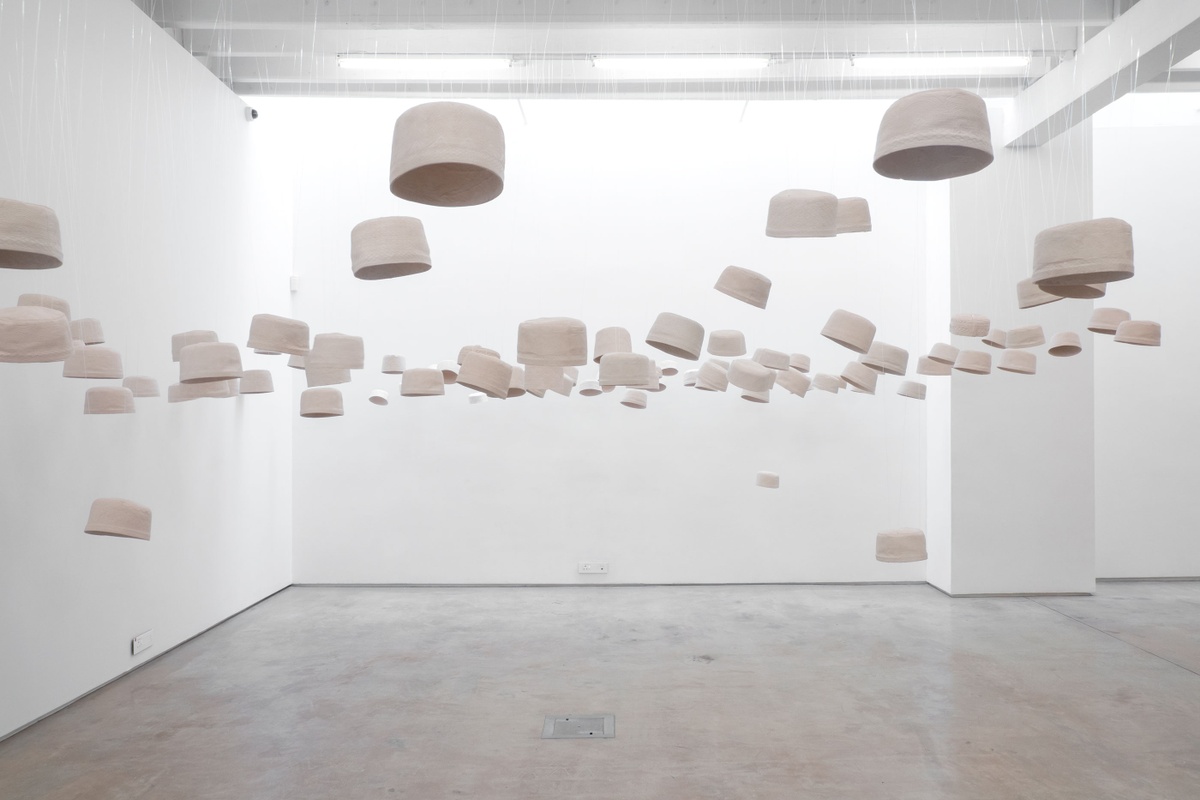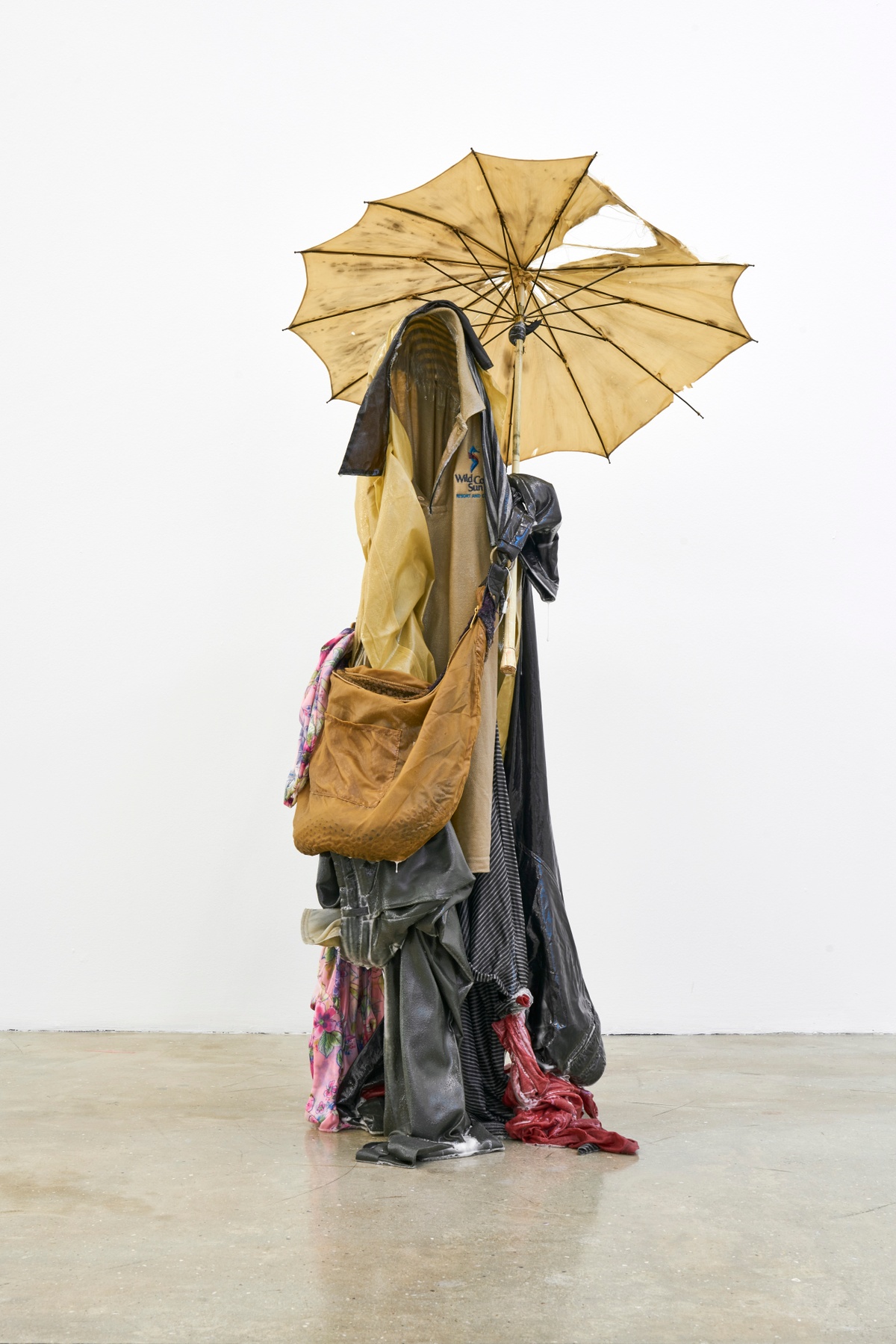Dor Guez
Samira in the work is Dor Guez’s grandmother on her wedding day. Guez found the damaged photograph in amongst a suitcase of family pictures, using three scanners to create a layered composite. The number three lends the image alchemical as well as archetypal qualities, as past, present, and future project from Samira's gaze. She is both herself and other. By the crop of the photograph, the image is a portrait. Abstracted by the blocks of white across her head and body where the subject's specificity has been removed via damage, the image accumulates a painterly quality, read in shapes of black and white. “The more you deal with a specific narrative, like my own family's personal catastrophe, the more it tells a broader story,” Guez said on the occasion of the artist’s exhibition Catastrophe at the Museo de Arte Moderno de Bogotá in March, 2022. His Christian Palestinian grandparents’ wedding was the first to be held after the war of 1948. The Palestinian community that hid within the walls of the Church of Saint George (where this wedding took place) were the only inhabitants of the city who managed to remain in Lydda, although not beyond the confines of the church and the slice of neighbourhood that was ghettoed in the aftermath of the war. A startling detail is carried in Samira’s stare – anyone who meets Dor Guez is immediately arrested by the artist’s ice-blue-green eyes. Samira’s eyes are the same as the artist's, their lightness visible in the black and white image, and for those who know the artist, are repeated again through his young daughter. If Samira is troubling to look at, this is because the image troubles the preposition. Is it at or through? The inscrutability of her expression evokes that of the most famous painted woman, the Mona Lisa, for the closer one looks, the less identifiable she becomes. What remains is a cipher for inheritances carried across time and place; a stare intense, probing, resolute. What is Samira asking of her viewer, in this present?
Editor’s note: Samira was the first artwork proposed by the curators for the exhibition Customs at A4. It could be said that Samira is the cornerstone, and from her placement, the exhibition could take shape.
b.1981, Jerusalem
“Lydda is where I go to think,” Dor Guez says of his ancestral home. After years spent living between New York and Jaffa, Guez felt compelled to make a permanent return. He lives not far from the church around which the life of his Christian Palestinian family and their community had, for centuries, revolved. “He saw himself as a rock in the landscape, and around him, everything was swirling,” Guez says of his grandfather’s experience of living in a territory whose people bear the incessant violence inflicted by disputing political masters. His practice is a constant dialogue between peeling and layering (peeling back that which has been covered over while layering the present with what has been removed – both history’s materials, and its narratives). Guez’ work evidences borders and their bleed, his practice a form of maintenance against the threat of erasure. What customs are carried across time, when multiple identities tesselate in one terrain?
